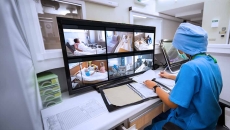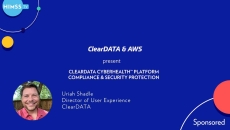Privacy & Security
The assessment is designed to help healthcare organizations ensure they have the right governance in place for deploying artificial intelligence and machine learning models.
SPONSORED
Digital communication tools can improve patient and business outcomes.
SPONSORED
Enhance patient and staff safety with video surveillance technology that combines 24/7 protection with AI, advanced analytics and cloud management.
This has already been a record setting year for cybersecurity, in all the wrong ways. Errol Weiss, chief security officer of Health-ISAC, discusses the cyber risks he's most concerned about and makes the case for cross-sector information sharing.
Healthcare organizations interact with massive amounts of data, from protected health information (PHI) to sensitive financial information. This data is at risk of exposure through human error, internal leaks, or attacks by hackers.
The company announced on Patch Tuesday that among 90 CVEs for August – including six zero-day exploits – the Azure Connected Machine Agent had a critical elevation of privilege vulnerability.
Healthcare organizations will need to go through a three-step process to achieve post-quantum safety: Discover, observe and transform, says Scott Crowder, vice president of IBM's quantum-safe adoption team.
SPONSORED
For many healthcare organizations (HCOs) working in a cloud environment, data visibility issues can present a challenge to maintaining regulatory compliance. ClearDATA’s CyberHealth™ Platform provides a real-time overview of an HCO’s data landscape, and its automated safeguards and controls with remediation steps enhance data security and compliance in the cloud.
Healthcare facility security teams are tasked with guarding staff and patients, securing valuables, protecting data, and managing emergencies 24/7 while also maintaining regulatory compliance.
SPONSORED
According to an IQVIA study, U.S. patients made 10 times more digital health visits in March 2021 than March 2020, showing that patients have come to appreciate telehealth’s speed and service. Adopting omnichannel patient communications enables healthcare organizations (HCOs) to connect with patients according to their communication preferences.













